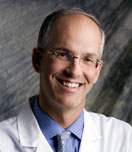Foreword
 I am honored to have been asked by Professor RK Mishra to write the foreward to his textbook of practical laparoscopic surgery. Less than twenty years ago laparoscopy was a revolutionary technology available in a few select centers for which indications were unclear at best. Now laparoscopy is the preferred method of surgery for a wide range of pathology ranging from cholecystitis and gastroesophageal reflux to morbid obestiy and colon carcinoma; virtually every gastointestinal tract operation can be laparoscopically undertaken. In most circumstances the laparoscopic approach has been shown to have numerous advantages including less pain, less morbidity, shorter hospitalization and less cost. In addition to being the access technique of choice from the esophagus to the rectum it has also gained significant popularity for urologic, gynaecologic, and other intraabdominal procedures. Because of the overwhelming surgeon and patient preference for laparoscopy, education and training in the laparoscopic arena have been in high demand. Although many textbooks have been written to help satisfy this void, few are as easy to read and as informative about the gamut of laparoscopic themes. The 42 chapters which Professor Mishra has written allow the most uninformed neophyte to rapidly understand the technical considerations related to these procedures. However the depth and breadth of the well illustrated volume also allow the experienced laparoscopic general, urologic, or gynaecologic surgeon to become familiar with the new and exciting areas such as robotics and hepatopancreatic operations. The illustrations are all cystal clear, the cutaway enlargements very helpful, and the text explaining them is easy to read. The subject matter has been well researched and is written in an authoritative although not pedantic way as could only be done by a highly experienced laparoscopic surgeon with a wonderful aptitude for sharing his knowledge. Professor Mishra has beautifully detailed each area ranging from the history of sterilization techniques to the physics of energy sources to practical methods of port site closure. The constant thread throughout the book is its practical nature - this is not a book to be taken from the shelf on rare occassions to use as a reference prior to performing the occassional obscure operation. This book is instead one to read cover to cover and then to share with one's residents, fellows, theatre staff, and associates to insure that each of them is fluent in the practicalities of laparoscopy. Having written a few books myself I know how much work is required to produce such a well illustrated and superbly written comprehensive textbook. It was immediately apparent to me during my reading that the textbook of practical laparoscopy was a labour of love for Professor Mishra and thus will become a cherished and favorite resource for all of its readers, including me. I wish to congratulate Professor Mishra on his outstanding achievement and thank him for having allowed me to review it and to write this brief foreward.
I am honored to have been asked by Professor RK Mishra to write the foreward to his textbook of practical laparoscopic surgery. Less than twenty years ago laparoscopy was a revolutionary technology available in a few select centers for which indications were unclear at best. Now laparoscopy is the preferred method of surgery for a wide range of pathology ranging from cholecystitis and gastroesophageal reflux to morbid obestiy and colon carcinoma; virtually every gastointestinal tract operation can be laparoscopically undertaken. In most circumstances the laparoscopic approach has been shown to have numerous advantages including less pain, less morbidity, shorter hospitalization and less cost. In addition to being the access technique of choice from the esophagus to the rectum it has also gained significant popularity for urologic, gynaecologic, and other intraabdominal procedures. Because of the overwhelming surgeon and patient preference for laparoscopy, education and training in the laparoscopic arena have been in high demand. Although many textbooks have been written to help satisfy this void, few are as easy to read and as informative about the gamut of laparoscopic themes. The 42 chapters which Professor Mishra has written allow the most uninformed neophyte to rapidly understand the technical considerations related to these procedures. However the depth and breadth of the well illustrated volume also allow the experienced laparoscopic general, urologic, or gynaecologic surgeon to become familiar with the new and exciting areas such as robotics and hepatopancreatic operations. The illustrations are all cystal clear, the cutaway enlargements very helpful, and the text explaining them is easy to read. The subject matter has been well researched and is written in an authoritative although not pedantic way as could only be done by a highly experienced laparoscopic surgeon with a wonderful aptitude for sharing his knowledge. Professor Mishra has beautifully detailed each area ranging from the history of sterilization techniques to the physics of energy sources to practical methods of port site closure. The constant thread throughout the book is its practical nature - this is not a book to be taken from the shelf on rare occassions to use as a reference prior to performing the occassional obscure operation. This book is instead one to read cover to cover and then to share with one's residents, fellows, theatre staff, and associates to insure that each of them is fluent in the practicalities of laparoscopy. Having written a few books myself I know how much work is required to produce such a well illustrated and superbly written comprehensive textbook. It was immediately apparent to me during my reading that the textbook of practical laparoscopy was a labour of love for Professor Mishra and thus will become a cherished and favorite resource for all of its readers, including me. I wish to congratulate Professor Mishra on his outstanding achievement and thank him for having allowed me to review it and to write this brief foreward.